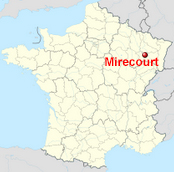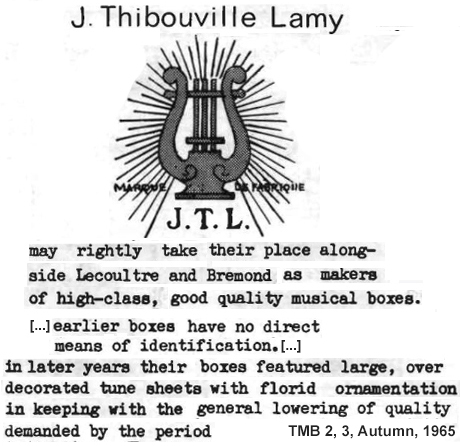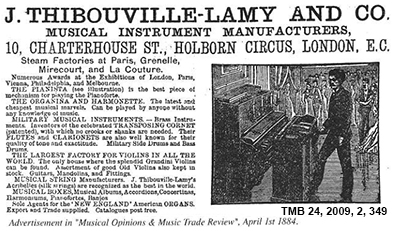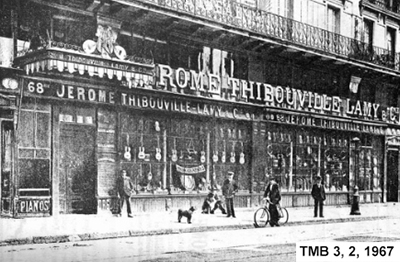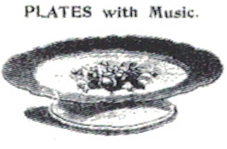|
Jérôme Thibouville, JTL, A maker at the beginning, he became a dealer, selling boxes movements predominantly made by L'Épée with a J.-T.-L. trade mark "68, 68 bis and 70 rue Réaumur, Paris, and (after 1884) at 7,9 and 10 Charterhouse Street, Holborn Circus, London. This very large musical instrument house was found in 1790 and majored on brass wind instruments. It established factories in many parts of France and bought up most of the makers of instruments at Mirecourt (Vosges) where serinettes and larger barrel organs were produced under the company name." "Very early on, Thibouville-Lamy entered into an arrangement with L´Épée of Sainte-Suzanne and for many years took virtually the whole of the European market for these French-made musical boxes which were sold under the Thibouville-Lamy name. The first London agent was Woog. The company later became agents for other makes of musical box, and, by 1890, advertised a wide variety of types and styles. The Paris arm of the company closed about 1968 and the London business, its Charterhouse Street premises having been destroyed during the war, moved first to 34 Aldersgate and is now at 44 Clerkenwell Road." Jérôme Thibouville-Lamy & Cie, abbreviated as "J.T.L.", was a French musical instrument making company, formed in the mid 19th century from the merger of pre-existing makers. It was based in Mirecourt, France, (little less than 5000 inhabants 2019), Region Grand Est (until 2015 Lothringen), .
and was active producing large numbers of woodwind, brass and stringed instruments until the mid 20th century. The company also made large numbers of mechanical organs and organettes between 1880 and 1910. Some of these models were made with license of the Gavioli company. The name was adopted around 1867 after Louis Émile Jérôme Thibouville, a partner in the instrument maker Husson-Buthod-Thibouville, married Marguerite Hyacinthe Lamy, a cousin of his business partners, and upon becoming owner of the firm he renamed it using their combined names: Jérôme Thibouville-Lamy. Thibouville was descendant of a line of woodwind and brass instrument makers dating back to the 16th Century. However, he was primarily an entrepreneur who was keen to develop a business in stringed instruments, and was not himself a luthier or bow-maker. The company grew quickly, and at its peak it reached annual production rates of over 150,000 instruments produced by more than 1,000 luthiers. In 1896 Alfred Acoulon joined the firm to take in charge the production of the instruments. In 1908 Hugues-Emile Blondelet, a violin maker from Mirecourt joined as co-director. Jérôme Thibouville-Lamy shut its doors in 1969. (Wikipedia, 15th January 2021)
Ausführlich: https://www.mbsgb.org.uk/TMB/V2_B3.pdf Melbourne International Exhibition 1880/81
(Musiktafel der Spieldose Nr. 64468) International Inventions Exhibition in South Kensington 1885
„Im AIMM-Journal Nr. 91, Musiques Mécaniques Vivantes, 3. Trimester 2014, ergänzt Jean-Luc Alexandre seinen Artikel über die Manufaktur Thibouville-Lamy vom Januarheft mit der Geschichte des Niedergangs der Firma, die erst 1968 definitiv endete.“ (Das mechanische Musikinstrument, Nr. 121, 2014, S. 51) Kleinformatige Spieldosen
|
